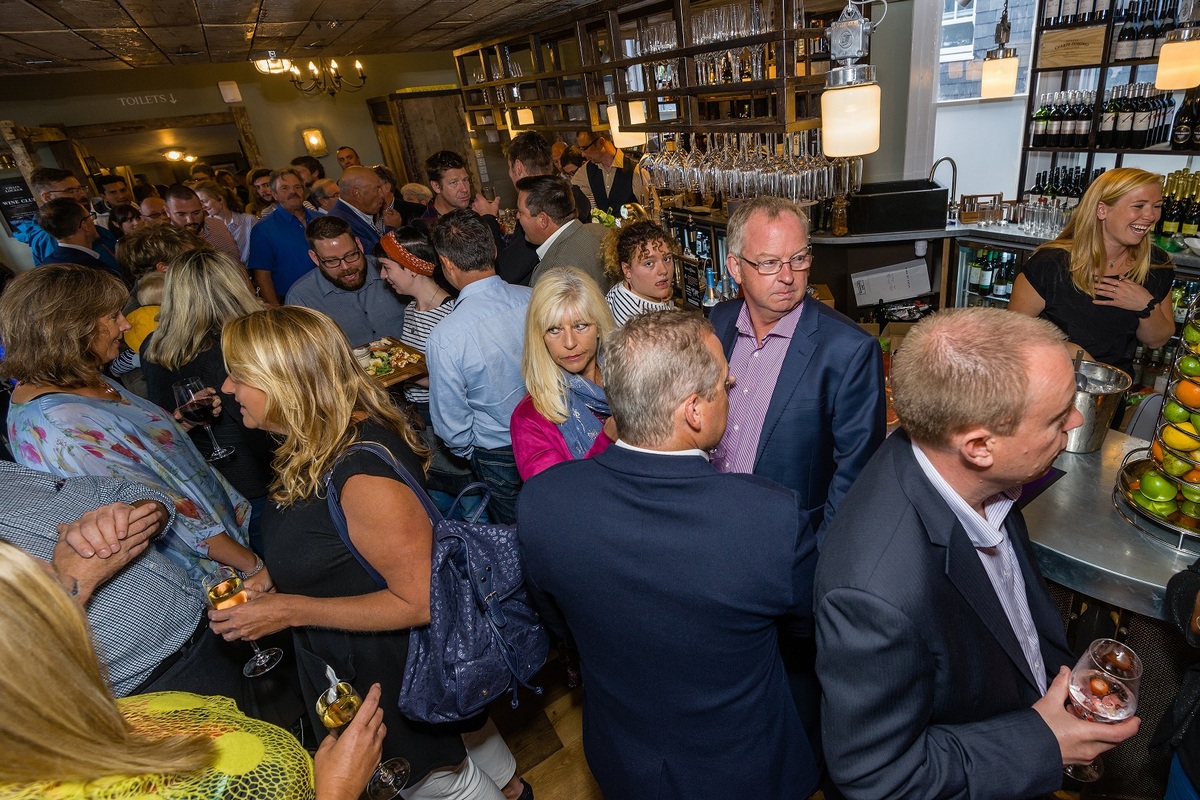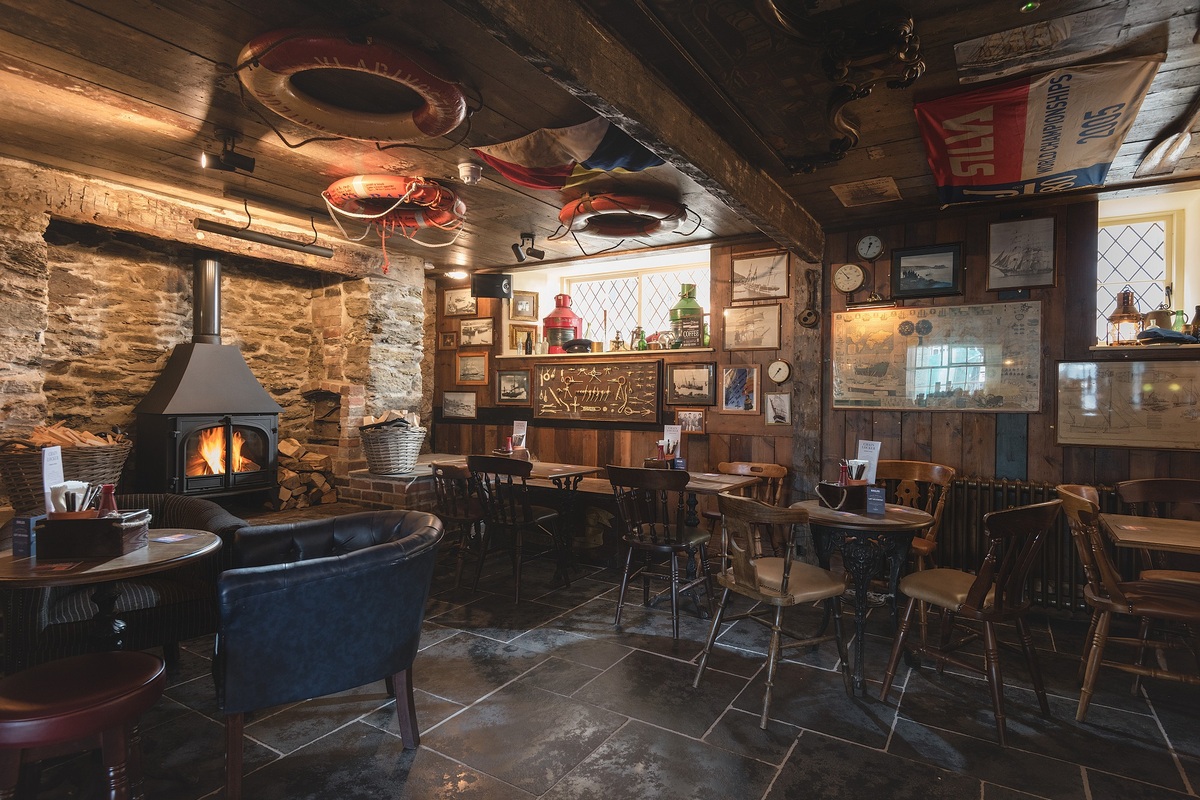Slideshow: St Austell retail director, Steve Worrall, with Chain Locker manager, Nathan Boundy, and St Austell chief executive, James Staughton; the re-opening party; and the new bar seating area
After an extensive multi-million-pound renovation and restoration programme, Falmouth’s iconic Chain Locker pub is open for business again.
It’s two years since St Austell Brewery purchased the historic harbourside property and nine months since the epic restoration programme got under way.
At the time of closing, every detail in the 17th century bar was photographed and catalogued by architects and interior designers from Cardiff-based Design Management Partnership (DMP), appointed by St Austell to design and project manage the refurbishment. Every item was removed and stored so that they could be put back in place once the necessary remedial works and additions, such as the new disabled access lift, had been completed.
 Falmouth fisherman Tim Vinnicombe (third left) had the honour of cutting the ribbon to re-open the club, watched by (left to right): St Austell Brewery retail director, Steve Worrall; St Austell chief executive, James Staughton; St Austell estate director, Adam Luck; National Maritime Museum Cornwall director, Richard Doughty; Falmouth BID manager, Richard Wilcox; and Falmouth town manager, Richard Gates
Falmouth fisherman Tim Vinnicombe (third left) had the honour of cutting the ribbon to re-open the club, watched by (left to right): St Austell Brewery retail director, Steve Worrall; St Austell chief executive, James Staughton; St Austell estate director, Adam Luck; National Maritime Museum Cornwall director, Richard Doughty; Falmouth BID manager, Richard Wilcox; and Falmouth town manager, Richard Gates
However, according to DMP director, Steve Peacock, as soon as construction work started, it became apparent that the building had suffered literally centuries of neglect prior to St Austell Brewery’s ownership and was in danger of complete collapse.
He said: “Express permission had to be sought from the local authority listed building officer and English Heritage to take large sections of the building apart and rebuild them from scratch to save the site.
“This became a huge challenge for the design team and the contractors and, of course, required a sizeable financial commitment from the owners, St Austell Brewery.”
Working closely with CAD Heritage, the Cornwall Archaeological Unit, listed building officer, Falmouth Town Council and Cornwall Council to complete the project in the right manner, the Chain Locker closure lasted longer than originally envisaged, the main reason being the additional remedial work required to make the building structurally sound.
CAD Heritage director, Sam Mayou, said: “We’re immensely pleased with what has been achieved at the Chain Locker. One of our main instructions from the brewery was to ensure that we didn’t lose the look and feel of the
original bar area,and all the positive feedback we have received so far tells us we got it right.
“As a team, not only have we given back to the people of Falmouth one of their most iconic drinking spots, but we have given the whole site a new lease of life for more people and future generations to enjoy.”
On top of the extensive works in the bar, the upstairs of the building has also been completely restored to create a fully accessible restaurant and oyster bar, with private eating rooms and covered balcony area overlooking the historic own quay. Further additions include six new bedrooms offering luxury accommodation at the water’s edge, some boasting breathtaking coastal views.
As the iconic pub and hotel threw its doors open last week for the first time since November 2016, St Austell Brewery retail director, Steve Worrall, was quick to praise those responsible for securing the future of the Chain Locker.
He said: “The potential for this site was always clear to us, but I don’t think anyone could have been prepared for the sheer scale of the works needed to bring the building back to life. We must say a huge thank you to all the
teams who have worked so hard together to make it happen, and we’re immensely proud to finally be able to show off what they have achieved.
“We know how much the pub means to the town and the local people, and the amazing response we have had so far from those who have visited the site is all the reward we need for our efforts.”







